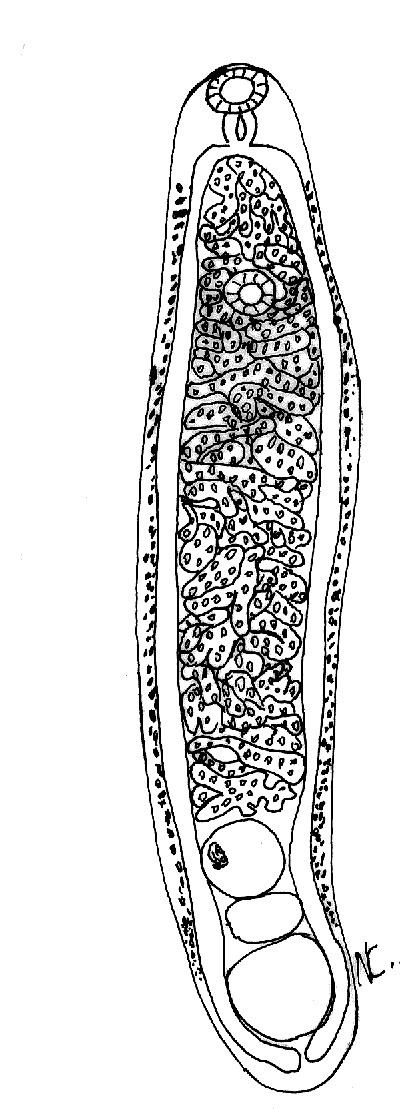Scientific name Brachylaima Rank Genus | Phylum Platyhelminthes Subclass Digenea | |
 | ||
Similar Digenea, Cernuella virgata, Physaloptera, Alaria, Otala punctata | ||
Brachylaima is a genus of trematode helminth that, it has recently been discovered, can infect the gastrointestinal tract of human beings.
Contents
Epidemiology and transmission
The first documented case of Brachylaima infection (known as brachylaimiasis) in a human was in 1996, with 8 subsequent cases in the next 4 years. Diagnosis so far has mostly been confined to the farming and town communities of the Yorke Peninsula, South Australia, except for one infection that was isolated from a child in the South East region of South Australia.
Transmission is via ingestion of infected white-shelled snails (found throughout most of South Australia and Australia). Children have purposely eaten snails, and adults have accidentally ingested snails on vegetables and become infected.
Clinical features
Clinical features have varied from recurrent short-lived episodic abdominal pain to recurrent severe watery diarrhoea.
Cardiac arrhythmias associated with heart failure refractory to treatment were present in a child infected, and completely resolved with anti-helminthic treatment.
Diagnosis
Diagnosis is by examination of stools, but is highly dependent on the skill and technique of the laboratory worker, with previous diagnoses missed by other hospital labs and only noted after examination at The Queen Elizabeth Hospital in Woodville, Adelaide, South Australia.
Treatment
Treatment with a short course of praziquantel results in complete resolution of symptoms and clearance of eggs from stools.
